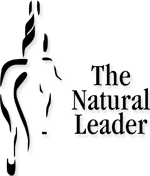 On about the twentieth downward dog of the class my mind started to drift. It could have been the heat of the room causing me to consider places I would rather be or simply it was the only position that allowed blood to my head. My transitions were getting slower, the hop your feet forward was more like a drag and time was slowing.
On about the twentieth downward dog of the class my mind started to drift. It could have been the heat of the room causing me to consider places I would rather be or simply it was the only position that allowed blood to my head. My transitions were getting slower, the hop your feet forward was more like a drag and time was slowing.
Despite that image I enjoy yoga – it helps maintain a strong core and good balance, I have to focus on breathing and yoga is another opportunity to push my limits. As I seek the feel of lengthen and shift I can’t miss the fact they are principals that apply to my leadership journey and elements that impact my horsemanship. Yoga, horsemanship or leadership it is all about me.
My first reaction was to stop, when my dog Lilly caused Rhys to bolt*. In an instant it became clear stopping was not an option but Ray Hunt’s words “I can ride a horse as fast as he can run.” seemed plausible. With all the time in the saddle and experience I have gained I let go of my first thought, I knew I could ride it out. Nature sets these events up well, as oxygen got the better of Rhys before we hit the end of the field so we slowed to a lope, trot then walk with little effort on my part. The remainder of the ride was quite pleasant once my heart slowed down and my left foot stopped shaking.
Leadership, horsemanship or yoga is about preparing yourself for how you will handle yourself when the going gets tough. Rhys has always suggested that he might bolt. When concerned Rhys locks down his tail and it feels like something is trying to grab him from behind, so what happened was a case of when. The more we test our relationship and trust for each other through longer and more varied rides the less often the ya buts occur.
In the back of my mind there has always been that question “What if?”. Self talk brings on self doubt, ironically words spoken by one of Calgary’s few female corporate leaders at a recent luncheon. She stated that self-doubt is one of the greatest limiting factors women bring on themselves in attaining leadership status in the corporate world. Believing that I would survive through the ride was all I needed, the rest was the knowledge and skill I have spent years developing.
Just as the yoga instructor is calling to us to push ourselves see if you can hold the pose just one more breath. Leadership and horsemanship is about that one breath bringing us places we never saw ourselves before. If you have read past newsletters you might recall that Rhys is often featured. While I love a quiet uneventful ride, I am always preparing myself and my horse for the what ifs.
We learn the most about ourselves from our challenging experiences, or at least we have that opportunity. I have learned more about myself, my horsemanship and my leadership through a decision way back when that “One of us had to change.”
*bolt in this context is a mad dash with little control as to direction or speed





 When introducing leadership through horsemanship I speak to a horse responding to us or their surroundings based on instinct, the desire to stay alive. It is a value I have seen a horse demonstrate, with varying degrees of commitment, time after time. Their behaviour reflects a core value.
When introducing leadership through horsemanship I speak to a horse responding to us or their surroundings based on instinct, the desire to stay alive. It is a value I have seen a horse demonstrate, with varying degrees of commitment, time after time. Their behaviour reflects a core value. “Make the right thing easy.”
“Make the right thing easy.”